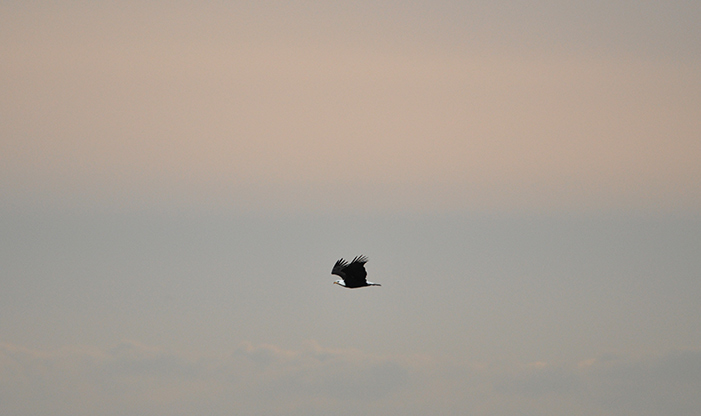People have long admired Bald Eagles as powerful and majestic birds. For this reason, they were chosen as our national symbol over 200 years ago. It was a fitting choice because they are the only eagle species that lives only in North America. Yet until recently, many people have not seen these birds in the wild. The awe-inspiring Bald Eagle has only recently come back from the brink of extinction.
Risk Factors for Healthy Bald Eagles
During the 1940s, DDT became widely hailed as the best pesticide for killing mosquitoes and other insects. However, people were unaware that this chemical was accumulating in small aquatic organisms. DDT was becoming more concentrated with each step up the food chain, reaching high levels in apex predators, like the eagle. In birds, DDT inhibits the implantation of calcium in eggshells. Adult eagles were crushing their eggs underneath them during incubation.
In 1967, only 72 Bald Eagle nests were recorded in the entire state of Wisconsin. There were only 417 breeding pairs throughout the entire country. Fortunately, concerned conservationists took notice, and in 1972, DDT was banned from use in the United States.
Protections Boost Bald Eagle Population
The following year, President Nixon signed the Endangered Species Act (ESA) into law. The Bald Eagle was one of the first animals to be protected. The Act helps species by making it illegal to harm them, by designating critical habitat, and by requiring the design of a species recovery plan. The Act helped save ninety-nine percent of all species protected by it from extinction. This includes other native Wisconsin birds like the Peregrine Falcon, Kirtland’s Warbler, and the Piping Plover. Bald Eagle populations have been improving so much since they were placed under protection they were deemed stable enough to be removed from the ESA in 2007.
The most recent nest survey conducted in 2019 confirmed nearly 1,700 bald eagle nests in Wisconsin. Our state has among the highest populations in the United States, behind Alaska and Florida, and is comparable to Minnesota. Bald Eagles nested in every county except for Milwaukee until 2023. Much to the celebration of biologists and eagle enthusiasts alike, three Bald Eagle nests were located in Milwaukee County that year. The high number of eagles in our state means that Wisconsin residents now have an incredible opportunity to see them up close.
Solitary until Winter
There are four groups of eagles in the world: fish, booted, snake, and forest eagles. Bald Eagles are a part of the fish eagle group, as their prey consists primarily of large fish. To catch their prey, eagles make their homes near open water. But, it’s a difficult feat to accomplish in winter. So, though solitary birds, in winter thousands of Bald Eagles congregate around the country’s largest open water sources, such as the Mississippi River in Western Wisconsin.
The Mississippi River is too large and fast to freeze completely in winter, making it a perfect habitat for these feathered fisherman. From December to mid-March, huge groups of eagles perch along the banks of the Mississippi throughout the day, scanning the open water for fish.
View Bald Eagles Respectfully, from a Distance
Between January 15 and July 30, the U.S. Fish and Wildlife Service’s Bald and Golden Eagle Protection Act prohibits human activity close to Bald Eagles’ nests. There are still plenty of opportunities to view eagles. People must view them from a respectful distance, without disturbing them from their nests or roosts.
Though once teetering on the brink of extinction, Bald Eagles have rebounded to achieve a healthy population. Join us this winter to admire them from afar to appreciate their strength, majesty, and resiliency.
This post has been updated to reflect the most recent data.


